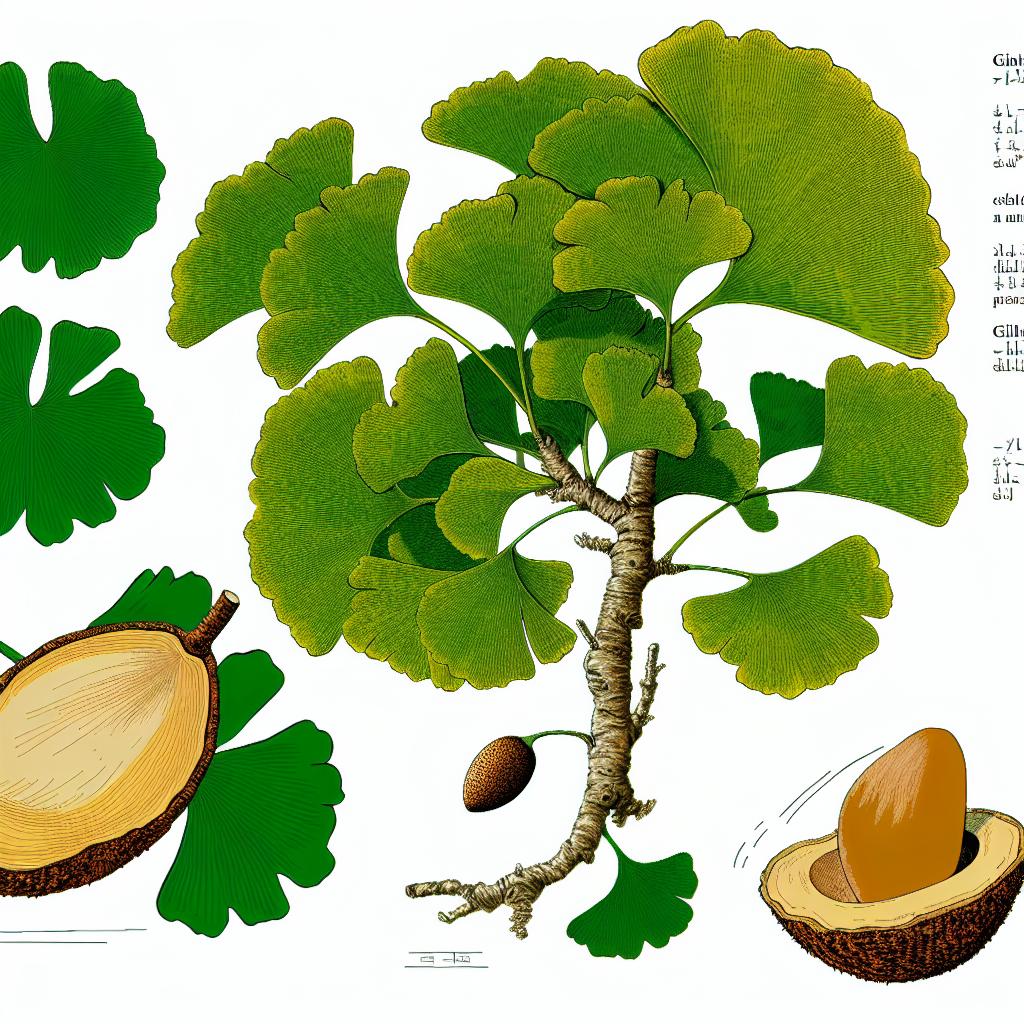Introduction to Ginkgo Biloba
Ginkgo biloba, widely known simply as ginkgo, represents a fascinating species of tree that stands out due to its singularity in the plant world, as it has no close living relatives. Notably distinguished by its fan-shaped leaves, this tree is indigenous to China and boasts a long history of cultivation spanning thousands of years. Often labeled a “living fossil,” the ginkgo tree has changed little over millions of years, which is an attribute that captures both scientific and cultural interest. Apart from its aesthetic and symbolic significance, ginkgo biloba is also appreciated for its potential health benefits, a factor that has led to its widespread use and study.
Botanical Characteristics
The ginkgo tree’s architecture is both unique and striking, growing to heights reaching up to 30 meters and typically adopting an irregular, pyramid-like form. The leaves are perhaps the most distinctive feature, appearing fan-shaped with a verdant green hue during their peak growth season. As autumn approaches, these leaves undergo a transformation, turning a vibrant yellow before they eventually fall, creating a visually appealing scene. Additionally, a key biological characteristic of ginkgo trees is that they are dioecious, meaning male and female reproductive organs are found on separate individual trees. The female trees, in particular, yield seeds encased in a fleshy coat, which, upon decay, may emit a rather unpleasant odor, thus drawing both curiosity and caution to these botanicals.
Historical Context and Cultivation
The role of Ginkgo biloba extends beyond mere aesthetics, as it holds a special place in traditional Chinese medicine and cultural practices, often revered as a sacred entity in many Eastern traditions. Historically, the leaves of the ginkgo have been utilized to support cognitive functions, and the seeds have played a role in treating various ailments. Evidence of the tree’s deep-seated integration into historical practices is found in ancient texts that document its application for health purposes. Its resilience and adaptability have seen its cultivation spread across the globe. Modern urban planners and horticulturists frequently integrate ginkgo trees into parks and city landscapes due to their visual appeal and durability in diverse environmental conditions. The spread of ginkgo to various parts of the world highlights its cultural and botanical importance, making it a fixture in both private and public green spaces.
Health Benefits and Uses
Ginkgo biloba has attracted significant attention in the health and wellness communities, largely due to the properties derived from its leaves. These leaves are processed into extracts that are acclaimed for a range of potential health benefits, albeit with varying degrees of scientific backing. Ginkgo is often marketed as a supplement that may enhance cognitive function, improve circulation, and provide relief for symptoms related to anxiety, among other uses. While many marketing claims are optimistic, it is important to note that studies assessing the efficacy of ginkgo supplements yield mixed conclusions, highlighting a landscape of outcomes that vary widely across different research efforts.
Potential Benefits:
- Cognitive Health: There are studies that suggest ginkgo extract might aid in enhancing memory and speeding cognitive processing, particularly in populations susceptible to cognitive decline.
- Antioxidant Properties: Ginkgo is rich in flavonoids and terpenoids, two compounds that are celebrated for their antioxidant properties, which contribute to the tree’s health-promoting claims.
- Circulatory Support: Anecdotal evidence and some research suggest that ginkgo may improve blood circulation and serve in alleviating conditions associated with impaired blood flow.
Considerations and Safety
As with many popular dietary supplements, it is crucial to consider both the potential benefits and the possible risks associated with the use of ginkgo biloba. Although widely available, users should be cautious about side effects that may occur, which include but are not limited to headaches, gastrointestinal disturbances, and feelings of dizziness. Furthermore, ginkgo may interact with certain medications, such as blood thinners, potentially enhancing or diminishing their effects and posing additional health risks. Therefore, it is prudent for individuals, particularly those with existing health conditions or those who are pregnant, to seek the advice of healthcare professionals prior to commencing a regimen of ginkgo supplements.
For individuals interested in delving deeper into the landscape of ginkgo research, including detailed studies or clinical trials, it is advisable to explore academic databases and consult with healthcare professionals. Staying informed through current scientific literature and expert opinion is crucial when evaluating the alleged benefits and inherent risks associated with ginkgo supplementation. In conclusion, while ginkgo biloba presents promising attributes both as a supplement and a botanical wonder, a diligent and informed approach is essential to maximize its benefits while minimizing potential risks.

